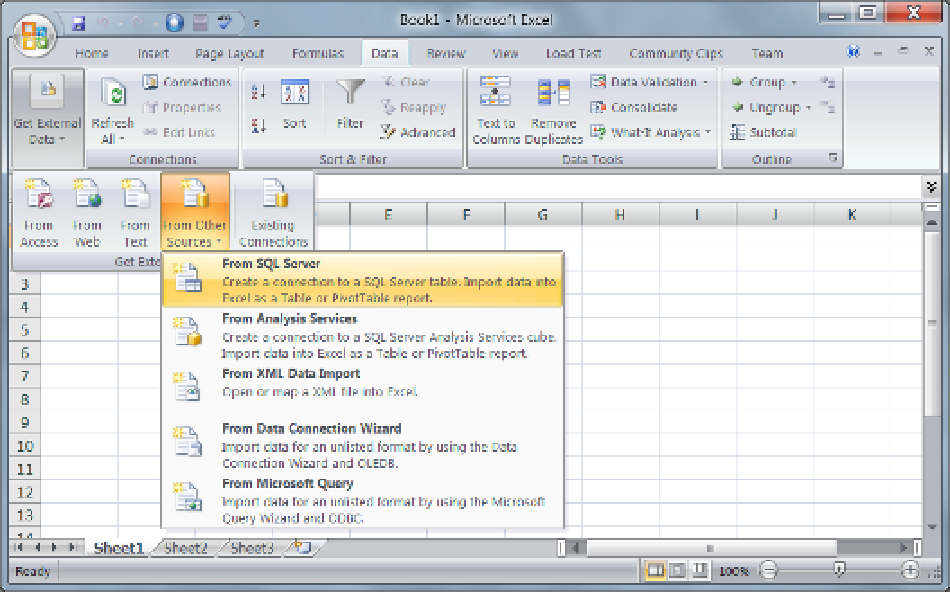Database Reference
In-Depth Information
As you saw in Figure
15-1
, Excel is situated as a tool for both personal and departmental BI solutions. Let's
get started learning how to use it!
Excel Reports from the Data Warehouse
Excel is capable of creating reports from many different data sources including text files and Microsoft Access
database and web services, to name a few. Excel becomes even more powerful when you couple it with either
Microsoft SQL Server or Microsoft's Analysis Server. This coupling feature, which has been available to Excel
since 1998, is one of the primary reasons for Excel's prominence as a reporting tool.
A number of additional reporting features were included with Office 2007. Office 2010 was given even more
features and is required for a number of the current BI add-ons, such as PowerPivot.
Creating a connection to either data warehouses or cubes is quite simple. We walk you through both options
within this chapter. We begin with Microsoft SQL Server and the data warehouse you created in Chapter
5
.
Creating a Connection
To create a connection to a data warehouse on Microsoft SQL Server, the first thing to do is open an existing Excel
spreadsheet or create a new one. From the open spreadsheet, go to the Data tab on Microsoft's Ribbon interface.
Locate the Get External Data button group and click From Other Sources to access an additional set of options
(Figure
15-2
).
Figure 15-2.
Getting report data from an external source

